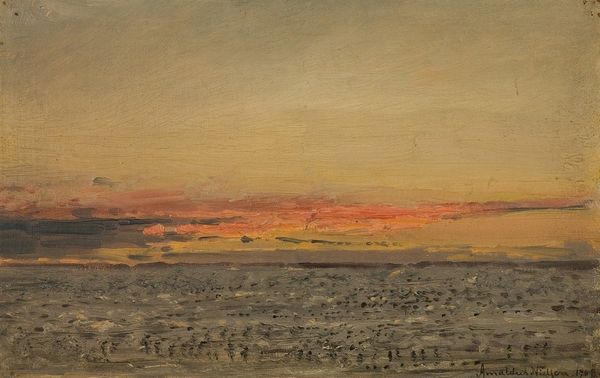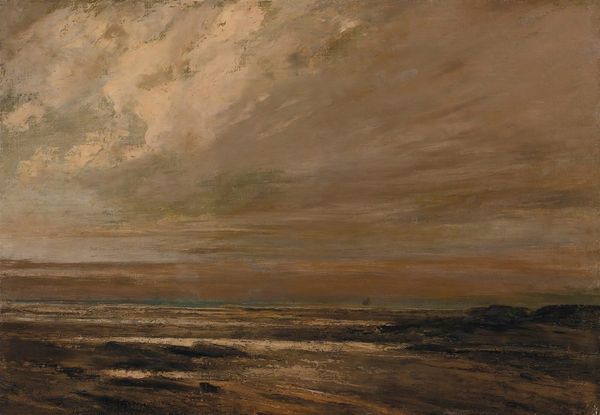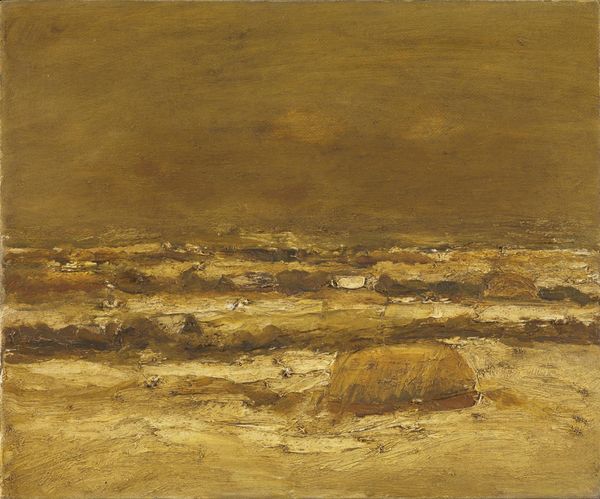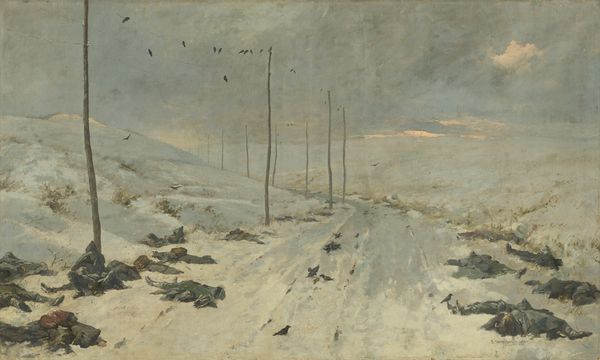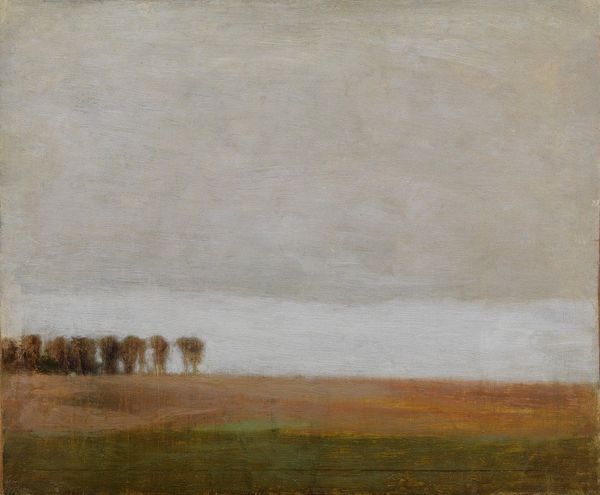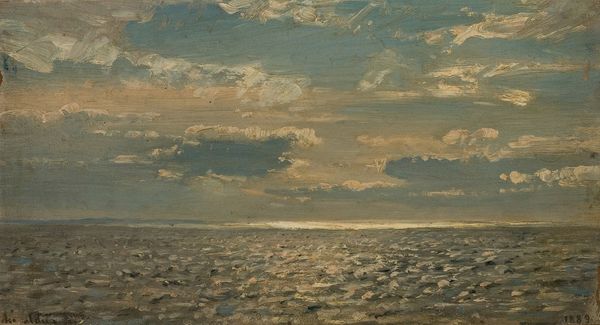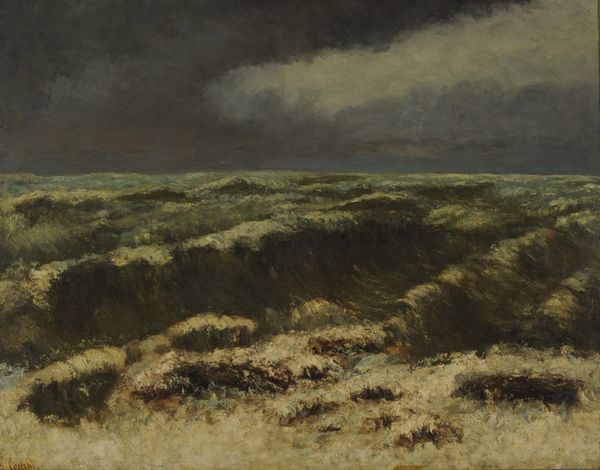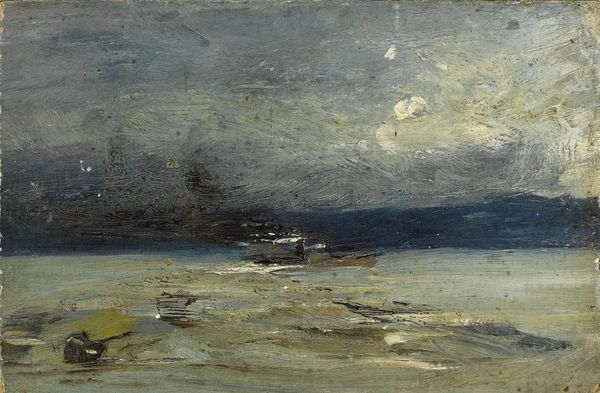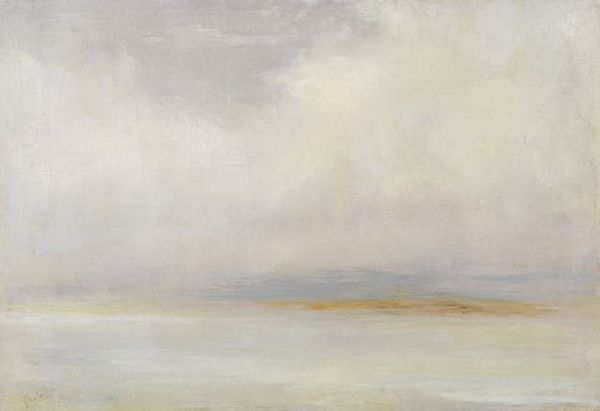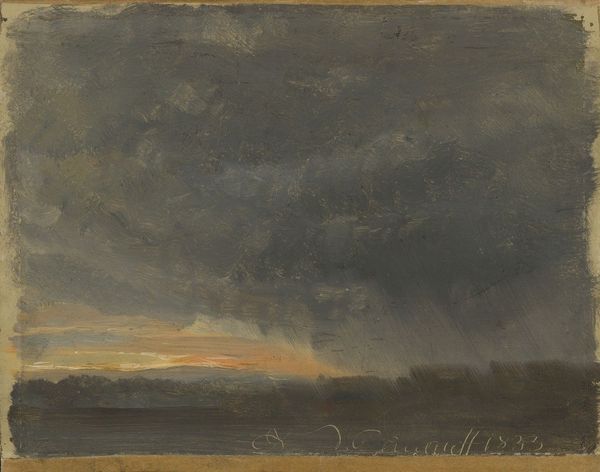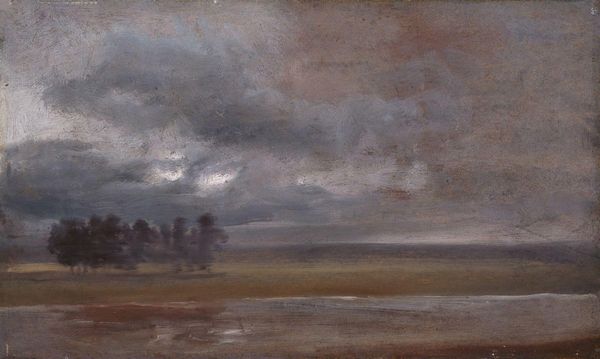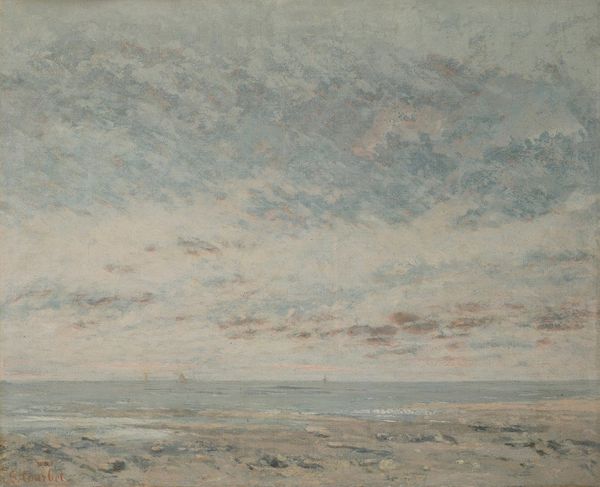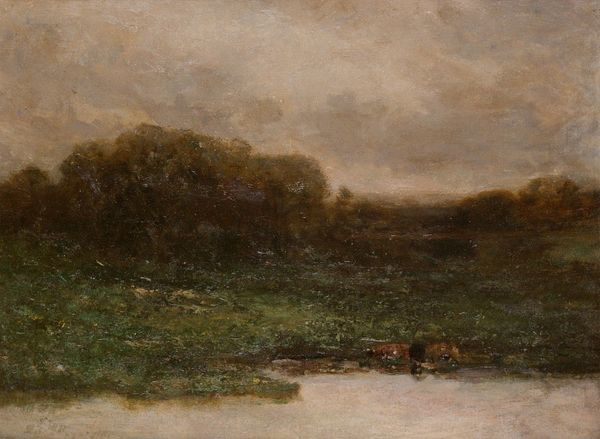
Copyright: Public Domain: Artvee
Editor: This is “Drivende Skyer,” or “Moving Clouds,” painted by Amaldus Nielsen in 1897, using oil paint. I’m really drawn to the contrast between the stillness of the land and the churning, almost violent, energy in both the sky and sea. How do you interpret this work? Curator: The dramatic contrast, precisely. Note how the artist utilizes a limited palette, dominated by grays and whites. This imbues the painting with a sense of somber grandeur. Consider the impasto technique; see how the thick application of paint, especially in the sky, creates a tactile, almost sculptural surface? How does that tactile quality affect your interpretation? Editor: I see what you mean! It definitely adds to the feeling of movement, like the clouds are literally rolling across the sky. The light reflecting off the water also looks pretty physical. Curator: Precisely. It's a fascinating use of materiality to evoke natural phenomena. Nielsen masterfully manipulates light and shadow to articulate form and volume within a seemingly monochromatic scheme. It verges on the abstract. Do you agree? Editor: I can see that, particularly in the sky area. The brushstrokes are loose and expressive. I hadn't really noticed that before. Curator: Considering those elements - the materiality, the limited palette, the loose brushwork - what’s the central subject here, and how is it communicated? Editor: It feels like the artist is less focused on accurately depicting a scene and more on capturing the *feeling* of a turbulent day. I guess, after our conversation, that the real subject might just be how Nielsen painted this picture. Curator: A keen observation. Sometimes the art is the doing, not the showing. Thank you, that gave me pause for thought.
Comments
No comments
Be the first to comment and join the conversation on the ultimate creative platform.
